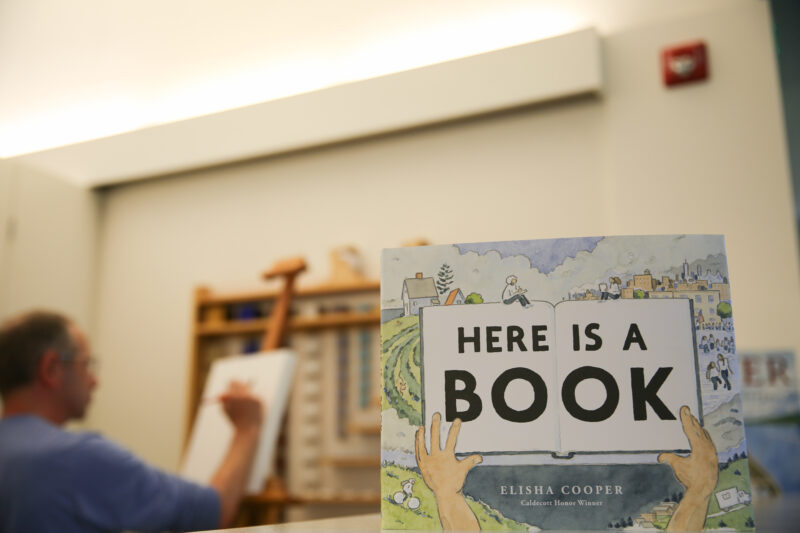We were thrilled to welcome our beloved author-in-residence, Elisha Cooper, back to The Children’s School. His visit—filled with warmth, creativity, and inspiration—gave students a front-row seat to the magic behind his just-released picture book, Here Is a Book. This luminous celebration of storytelling has already become a favorite in our classrooms, and we are excited for the many ways it will spark imaginations in the months to come.
Elisha read to small groups of children, inviting them into the heart of his creative process. As he turned the pages of Here Is a Book, he spoke about the inspiration behind his gentle watercolor illustrations—the soft colors of the sky, the details of houses, studios, and nature—and the memories that shaped them. He revealed that two houses in an early spread were inspired by his grandmothers’ homes: one a quiet cabin where she painted, the other a writer’s nook. A small figure with a sketchpad, nestled in a corner of the illustration, caught the children’s attention. “That’s me as a boy,” he smiled. And, true to form, a cat appears in the background— “because I like cats.”
Here Is a Book takes readers on a journey through the making of a picture book—from a writer’s first spark of inspiration in the countryside to the hands of a child discovering it for the first time. Along the way, readers witness moments of creativity and reflection: sketching, revising, gardening, cooking, and living in a world filled with warmth and love. Elisha shared how even a simple item like a wastebasket in the artist’s studio matters— “because there are always mistakes,” he noted, reminding students that errors are part of every creative process.
Later in the story, as books make their way from printing presses to homes, libraries, and schools, Elisha paused to explore the word “grit” with the children, inviting them to think about perseverance and passion. He showed them hidden surprises—like the watercolor under the dust jacket featuring a library shelf with the word “book” written in many languages, and mini-illustrations of favorite children’s stories tucked into shelves.
The children were captivated by Elisha’s poetic style, thoughtful storytelling, and the gentle humor that fills his pages. We are especially grateful for the clarity and care in his language, which encourages readers to slow down, observe, and wonder.
Elisha closed his visit with simple, encouraging advice to our budding writers and artists: “Start small, add more small things, and stick with it.”
We hope his words—and the joyful sketches he created before the children’s eyes—will stay with them all summer long, reminding them that creativity lives in the little moments, and that every story begins with a single page.
For the love of stories and the people who tell them,
Maureen
